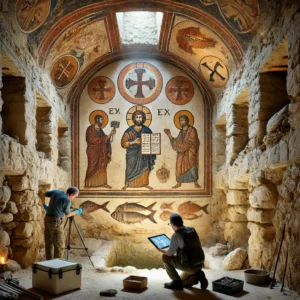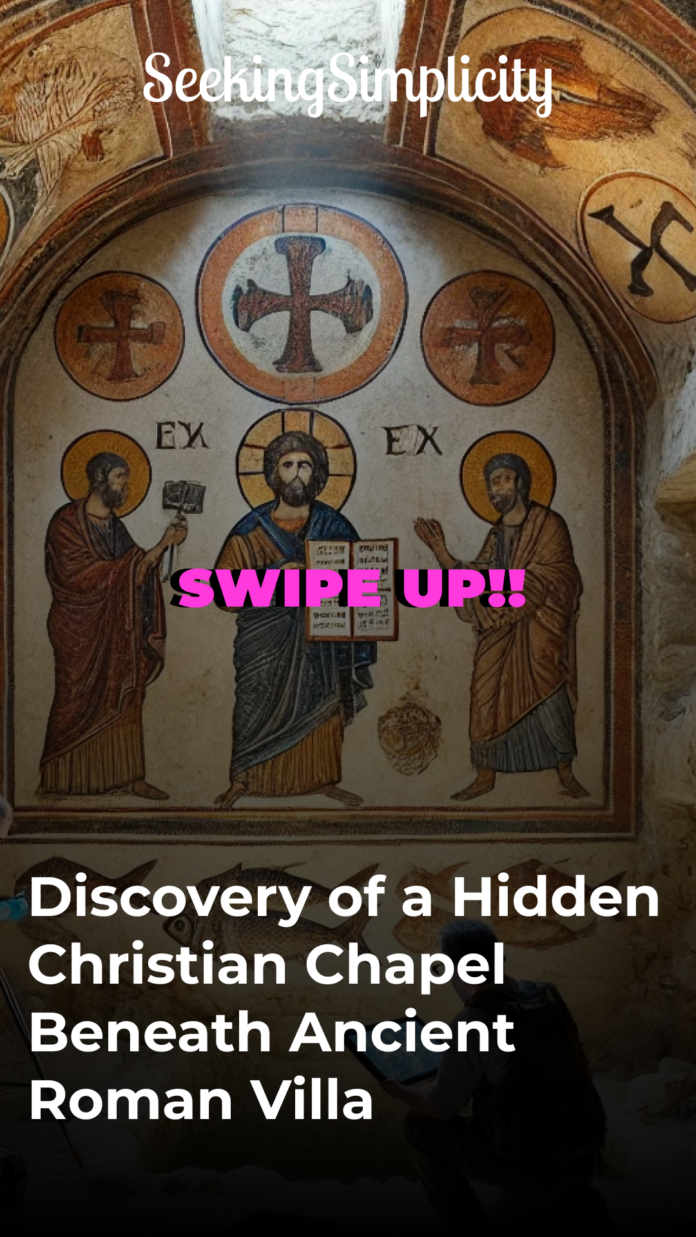Rome, Italy — Archaeologists working near the outskirts of Rome have uncovered an extraordinary find: a hidden Christian chapel beneath the ruins of a sprawling Roman villa. Dating back to the 3rd century AD, the chapel appears to have been used for secret worship during the height of Roman persecution against Christians.
The chapel features intricate mosaics and frescoes depicting early Christian symbols, including the ichthys (fish), Chi-Rho, and the Good Shepherd. These symbols were used by Christians to communicate their faith discreetly during a time when openly practicing Christianity could result in imprisonment or execution.
Dr. Giovanni Capello, the lead archaeologist, said, “This discovery provides us with tangible evidence of how early Christians adapted to survive and practice their faith in secret. The craftsmanship of the mosaics suggests that the villa’s owner may have been a wealthy Roman who covertly supported the Christian faith.”
The inscriptions on the chapel walls include prayers for protection and thanksgiving, along with references to early martyrs. Artifacts such as oil lamps, pottery, and coins found nearby suggest the site was actively used for several decades before Christianity was legalized under Emperor Constantine in 313 AD.
The discovery has garnered global attention, with plans to preserve the site and potentially open it as a museum showcasing the resilience of early Christians.

